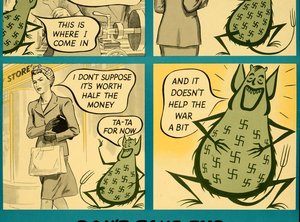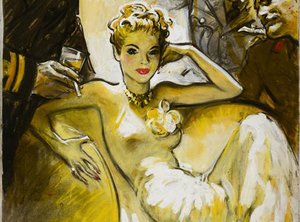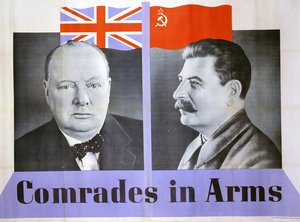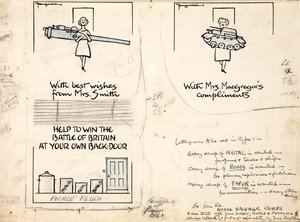Record revealed
War diary from 1939 with posters and Christmas cards
War diaries were historical records created by units in the British Army during wartime operations. They normally included narratives of events, orders and reports. This one is unusual: it contains posters and Christmas cards for the troops.
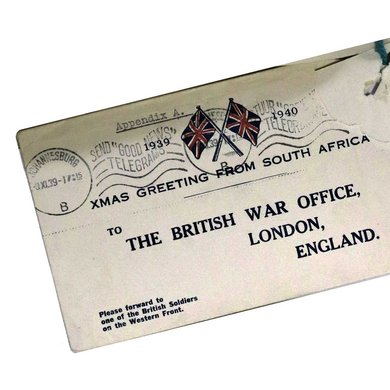
Image 1 of 6
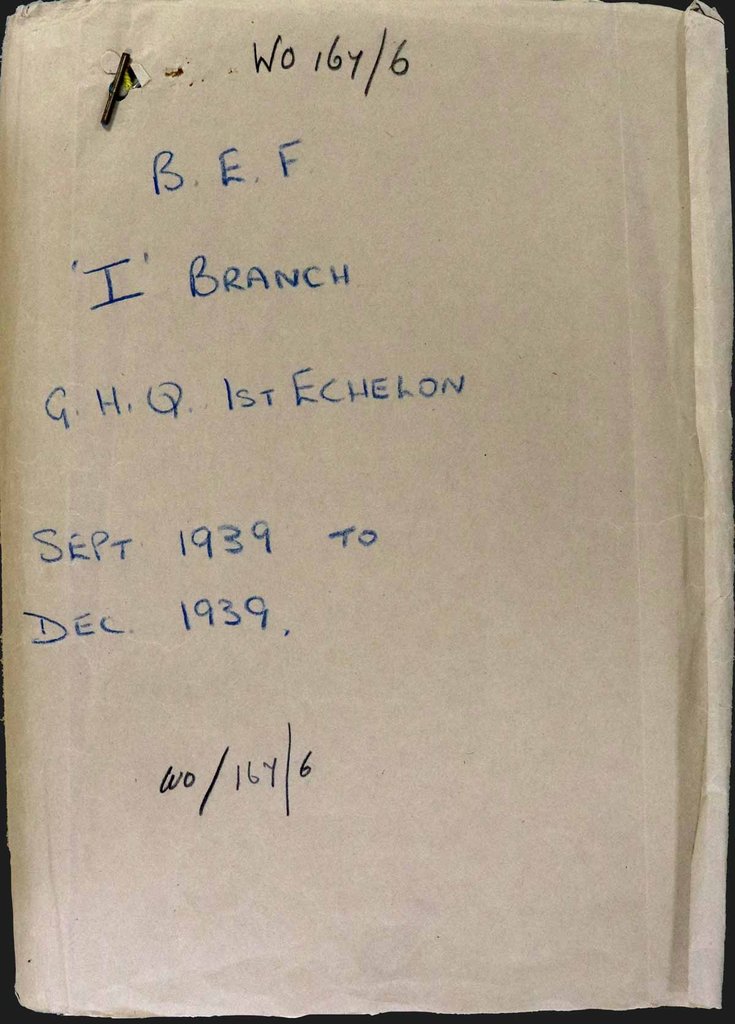
Cover of the 1939 war diary.
Transcript
WO 167/6
B.E.F.
'I' BRANCH
G.H.Q. 1ST ECHELON
SEPT 1939 TO DEC 1939.
WO 167/6
Image 2 of 6
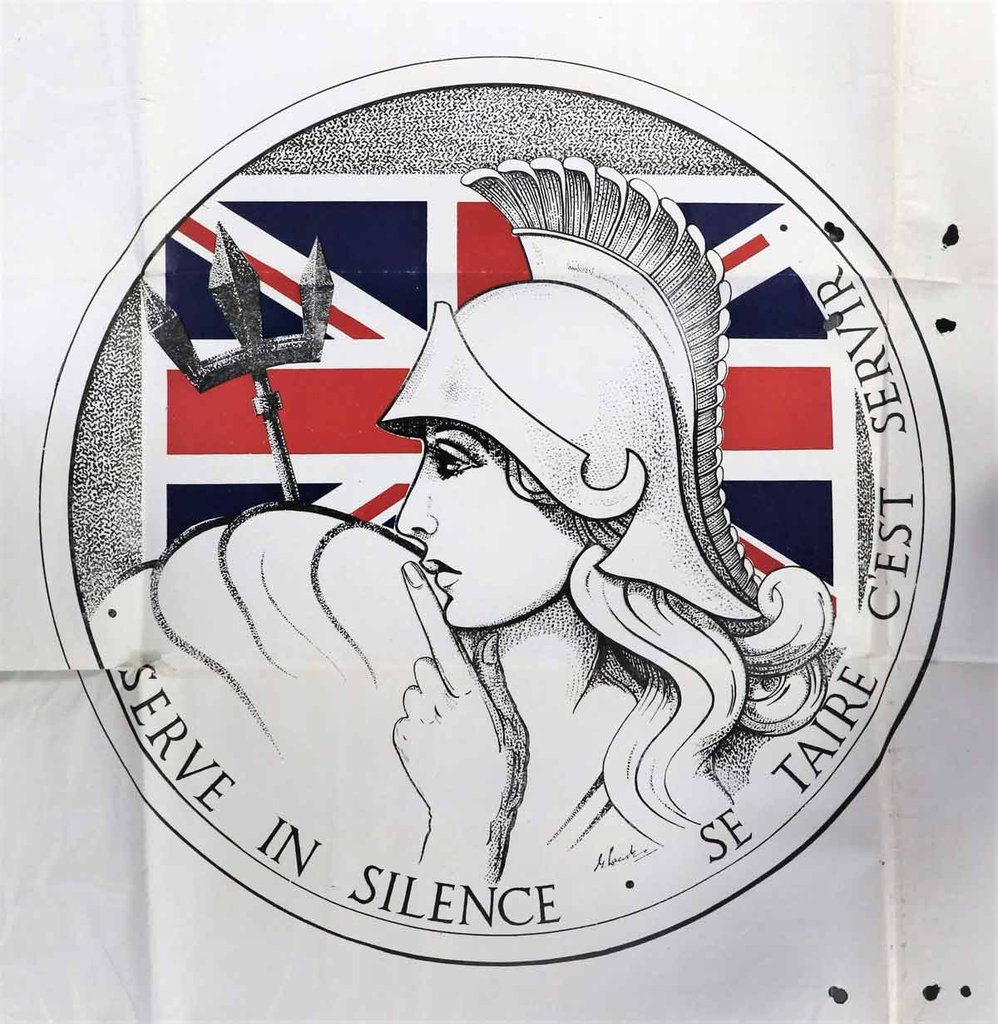
'Serve in silence' poster from the war diary, October 1939.
Transcript
SERVE IN SILENCE
SE TAIRE C'EST SERVIR
Image 3 of 6
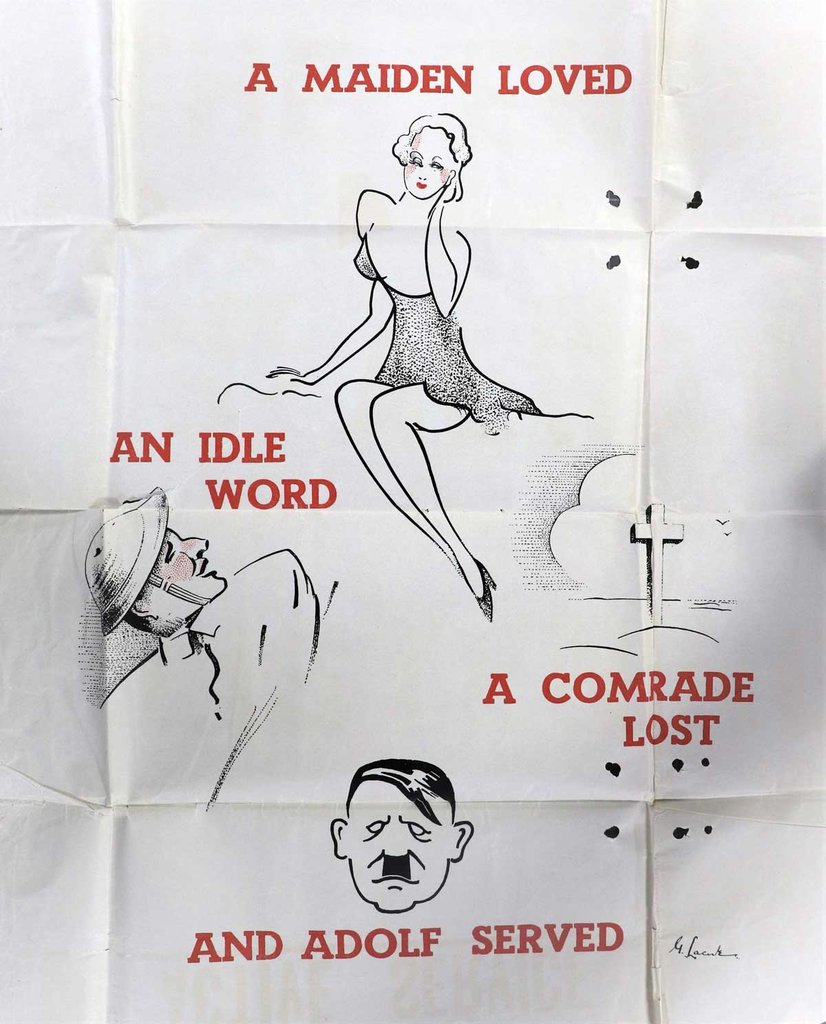
'A maiden loved' poster from the war diary, October 1939.
Transcript
A MAIDEN LOVED
AN IDLE WORD
A COMRADE LOST
AND ADOLF SERVED
Image 4 of 6
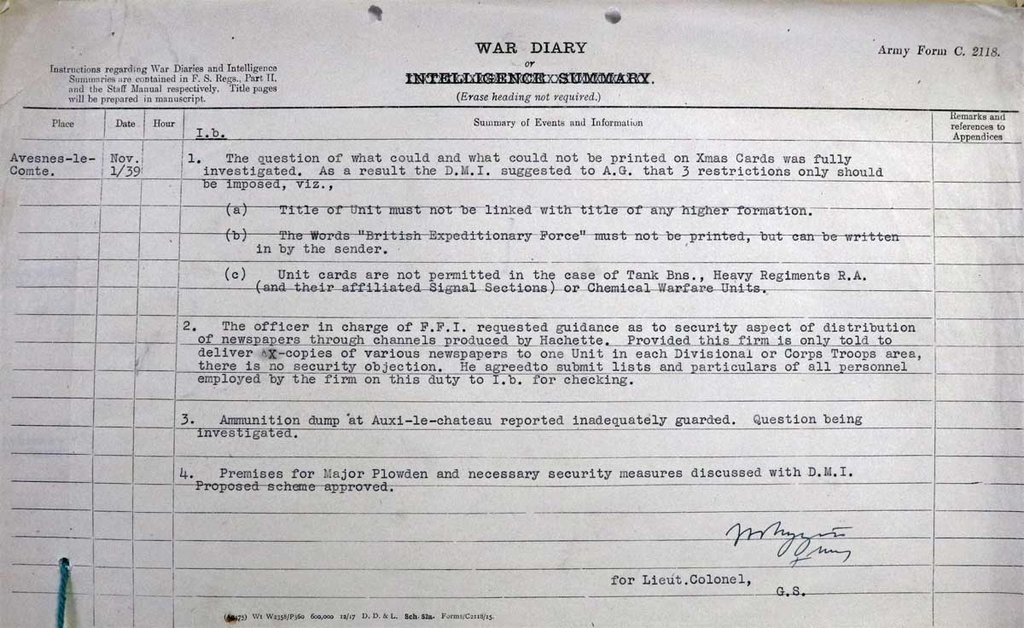
Page from the war diary, November 1939.
Partial transcript
Summary of Events and Information
I.b. [possibly the Intelligence Branch]
1.The question of what could and what could not be printed on Christmas cards was fully investigated. As a result the DMI [possibly the Director of Military Intelligence] suggested to AG that 3 restrictions only should be imposed, viz.,
(a) Title of Unit must not be linked with title of any higher formation.
(b) The Words “British Expeditionary Force” must not be printed, but can be written in by the sender.
(c) Unit cards are not permitted in the case of Tank Bns., Heavy Regiments R.A. [Royal Artillery] (and their affiliated Signal Sections) or Chemical Warfare Units.
Image 5 of 6
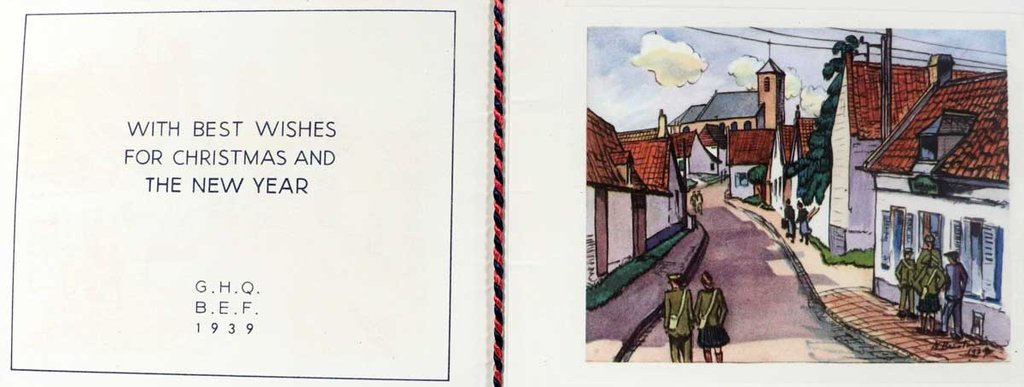
Blank, BEF-marked Christmas card from the war diary, 1939.
Transcript
WITH BEST WISHES FOR CHRISTMAS AND THE NEW YEAR
G.H.Q.
B.E.F.
1939
Image 6 of 6
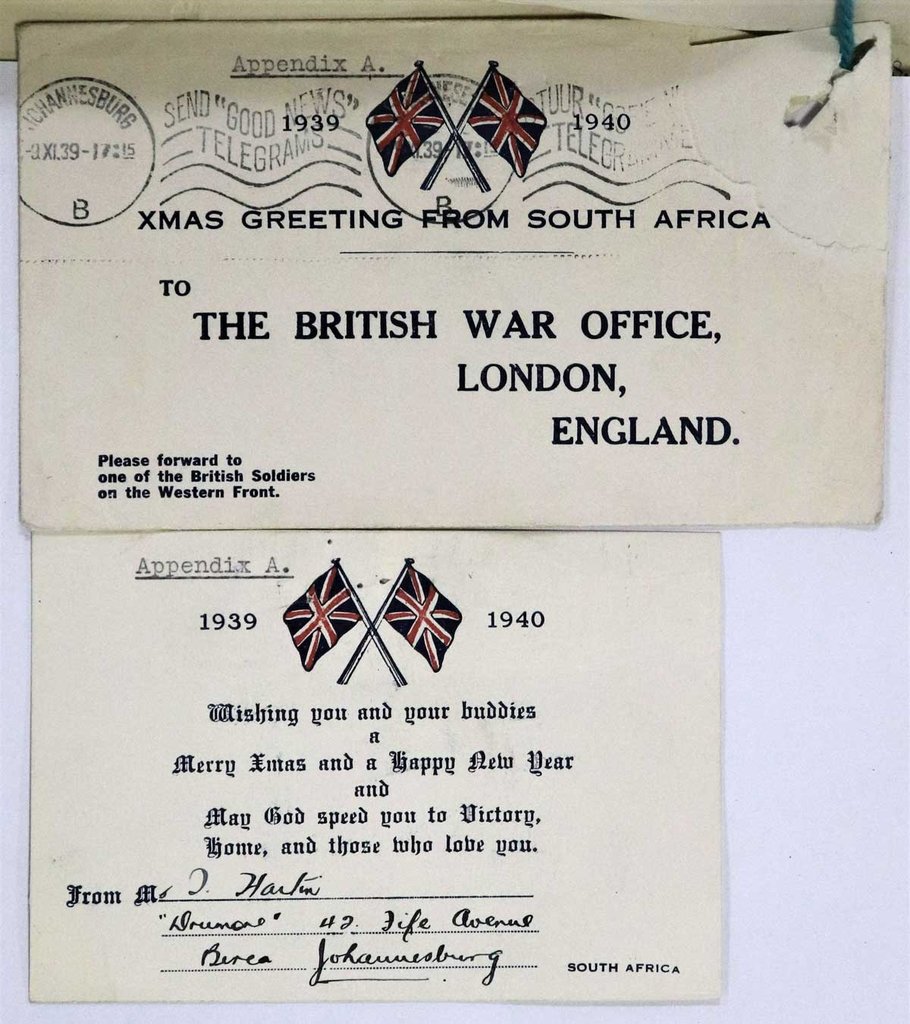
Christmas card from South Africa from the war diary, 1939.
Partial transcript
[Envelope]
XMAS GREETING FROM SOUTH AFRICA
TO THE BRITISH WAR OFFICE, LONDON, ENGLAND.
Please forward to one of the British Soldiers on the Western Front.
[Card]
1939 1940
Wishing you and your buddies a
Merry Xmas and a Happy New Year
and May God speed you to Victory,
Home, and those who love you.
Why this record matters
Date: 1939
Catalogue reference: WO 167/6
After war was declared against Nazi Germany in 1939, part of the British Army, the British Expeditionary Force (BEF), was sent to France. By mid-1940 it had created over 1,400 war diaries. These were intended to keep a historical record and to help improve army practices in future.
This one was compiled by the BEF General Headquarters Intelligence Branch during the 1939–40 campaign in France and Belgium. In November 1939 it was based at Avesnes-le-Comte, near Arras in northern France.
The two posters pictured were part of a set that was folded and tagged inside the October 1939 section of the document, with tag holes visible on the right of each picture. They warned troops not to reveal military secrets, along the lines of ‘careless talk costs lives’. The name of the artist is difficult to identify but it might be Gerald Lacoste (1908–1983).
A November 1939 entry in the diary discusses restricting the words permitted on Christmas cards sent from the BEF. It suggests that the words ‘British Expeditionary Force’ should not be printed on cards (though the sender could write them on if they wanted), and that a named unit could not be associated with its higher formation, meaning its position in the army. This typescript page is typical of the contents of war diaries from the time.
An example of a Christmas card with the initials ‘GHQ BEF’ (but not the words spelled out) was included in the December section. Another Christmas card, sent from South Africa, was addressed to British troops in France via the War Office in London.
Though you will occasionally see pictorial items in war diaries, they are not normally mentioned in our catalogue, so finding them is often a matter of chance. They are, however, more commonly found within headquarters branches’ records rather than units such as battalions or regiments. As our research guidance explains, you can search in our online catalogue to look for the more likely types of documents.
Blogs and podcasts
-

Blog: Abbreviation and identification – Cataloguing war diaries 1939–46
By Michael McGrady – 25 November 2021
The National Archives has a very large collection of army war diaries from the Second World War. This blog explores a project we worked on to improve how they're listed.
-
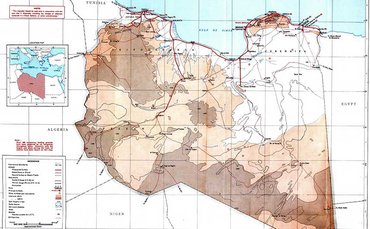
Blog: Researching overseas forces in the Second World War
By Charlotte Marchant – 13 July 2022
This blog explores a particularly puzzling and somewhat peculiar set of service records recently transferred to The National Archives, simply described as ‘French Tchad’.
-
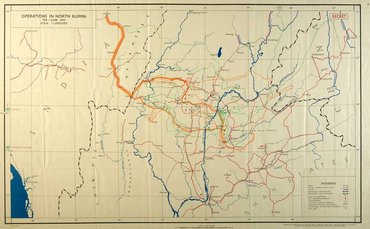
Blog: The South East Asian battlespace of the Second World War
By Pragya Dhital – 6 September 2023
War diaries shed light on the experiences of the Chindits, special forces engaged in irregular warfare against the Japanese in occupied Burma (current day Myanmar). This blog investigates..
